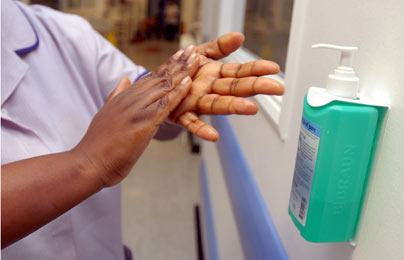Activities paid with public money should be accessible. Not just for the ability to see where tax dollars are spent (although that is a good reason) but because making stuff public might make those involved perform closer to the accepted standard. Restaurant inspections, sampling data and outbreak investigations all fall into this category. When people know that results are going to be released, maybe they will invest time and resources with an eye on doing a better job. In PLoS Medicine, Nick Daneman and a team of researchers in Toronto report that when it comes to hospital-related C.difficle infections mandatory public reporting of incidents seems to be a factor that led to better disease control performance.
Daneman was quoted in the Toronto Star as saying,
The research does not pinpoint the specific mechanisms that reduced rates — that is the subject of further research — but he and his colleagues believe that publicly releasing infection rates motivated hospitals to better adhere to best practices in infection control.
“We know that when you measure and when you publicly report you can really drive change,” she said. “People who work in health care really want to do what’s best for patients and when they see that they can do better, how they stack up against other hospitals, they can improve their outcomes.”
The abstract is below:
Reduction in Clostridium difficile Infection Rates after Mandatory Hospital Public Reporting: Findings from a Longitudinal Cohort Study in CanadaNick Daneman, Therese A. Stukel, Xiaomu Ma, Marian Vermeulen, Astrid Guttmann
17.jul.12
Background
The role of public reporting in improving hospital quality of care is controversial. Reporting of hospital-acquired infection rates has been introduced in multiple health care systems, but its relationship to infection rates has been understudied. Our objective was to determine whether mandatory public reporting by hospitals is associated with a reduction in hospital rates of Clostridium difficile infection.
Methods and Findings
We conducted a longitudinal, population-based cohort study in Ontario (Canada’s largest province) between April 1, 2002, and March 31, 2010. We included all patients (>1 y old) admitted to 180 acute care hospitals. Using Poisson regression, we developed a model to predict hospital- and age-specific monthly rates of C. difficile disease per 10,000 patient-days prior to introduction of public reporting on September 1, 2008. We then compared observed monthly rates of C. difficile infection in the post-intervention period with rates predicted by the pre-intervention predictive model. In the pre-intervention period there were 33,634 cases of C. difficile infection during 39,221,113 hospital days, with rates increasing from 7.01 per 10,000 patient-days in 2002 to 10.79 in 2007. In the first calendar year after the introduction of public reporting, there was a decline in observed rates of C. difficile colitis in Ontario to 8.92 cases per 10,000 patient-days, which was significantly lower than the predicted rate of 12.16 (95% CI 11.35–13.04) cases per 10,000 patient-days (p<0.001). Over this period, public reporting was associated with a 26.7% (95% CI 21.4%–31.6%) reduction in C. difficile cases, or a projected 1,970 cases averted per year (95% CI 1,476–2,500). The effect was specific to C. difficile, with rates of community-acquired gastrointestinal infections and urinary tract infections unchanged. A limitation of our study is that this observational study design cannot rule out the influence of unmeasured temporal confounders.
Conclusions
Public reporting of hospital C. difficile rates was associated with a substantial reduction in the population burden of this infection. Future research will be required to discern the direct mechanism by which C. difficile infection rates may have been reduced in response to public reporting.
